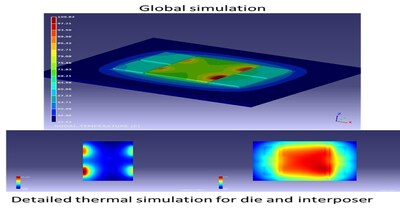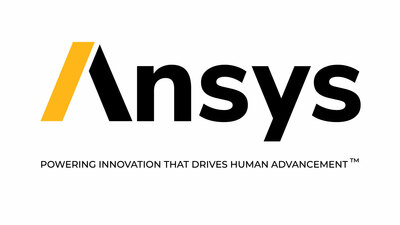Ansys, Intel Foundry Collaborate on Multiphysics Analysis Solution for EMIB 2.5D Assembly Technology
- None.
- None.
Insights
In the semiconductor industry, the collaboration between Ansys and Intel Foundry to enhance electro-thermal analysis tools for multi-chip high-performance computing (HPC), graphics and AI applications signifies a strategic move to address the growing complexity of chip design. The integration of Ansys' multiphysics analyses into Intel's 2.5D chip assembly technology, particularly the embedded multi-die interconnect bridge (EMIB), is a technical advancement that could potentially increase the performance and reliability of semiconductor products.
The use of Ansys RedHawk-SC Electrothermal™ for signoff verification ensures that the thermal integrity, power integrity and mechanical reliability meet the required standards before production. This is critical because thermal management is a key factor in the performance and longevity of semiconductor components, especially as chips become more densely packed with transistors. By simulating thermal behavior and mechanical stresses, manufacturers can preemptively address issues that could lead to failure, thereby reducing the risk of costly recalls or redesigns.
The ability to accurately simulate anisotropic thermal conduction is particularly relevant for Intel's backside power distribution technology, which is a departure from traditional through-silicon vias (TSVs). This suggests a potential for more efficient power distribution within the chip, leading to higher speeds and lower power consumption. Such advancements could have a ripple effect on industries reliant on semiconductor technologies, including AI, autonomous driving and graphic processing.
From a financial perspective, the collaboration between Ansys and Intel is an indicator of proactive investment in research and development (R&D) to stay ahead in the competitive semiconductor market. The development of advanced simulation tools like Ansys RedHawk-SC Electrothermal™ is likely to be a differentiator that can attract additional customers for both companies, potentially leading to increased market share and revenue growth.
Investors should note that such technological collaborations can have a significant impact on the valuation of the companies involved. If the enhanced tools lead to a reduction in time-to-market for new semiconductor products or an increase in their reliability, this could result in a competitive advantage. The ability to simulate and verify complex chip designs before production can also lead to cost savings by minimizing the need for physical prototypes and reducing the likelihood of post-production issues.
It is important to monitor how the market responds to these developments and whether the enhanced capabilities translate into tangible financial results in subsequent quarters. The long-term success of this collaboration will depend on the adoption rate of the technology by other players in the industry and the ability of Ansys and Intel to capitalize on their R&D investments.
The announcement of Ansys and Intel Foundry's collaboration is a noteworthy development for stakeholders in the technology sector, particularly those focused on the design and manufacture of complex semiconductor systems. The ability to perform multiphysics analysis is becoming increasingly important as the industry pushes the boundaries of chip performance and power efficiency.
Market demand for high-performance computing, AI and graphics processing units is on the rise and the ability to efficiently and reliably connect multiple dies within a single package is crucial. EMIB technology is an innovative solution to this challenge and its integration into Ansys' signoff platform could accelerate the adoption of more advanced system architectures. This could lead to a shift in the competitive landscape, with companies that leverage these advanced tools gaining an edge in delivering next-generation products.
Additionally, the collaborative effort to make this technology 'easily accessible to joint customers' indicates a commitment to broadening the ecosystem and enabling a wider range of companies to benefit from these advancements. This democratization of technology could spur innovation and lead to a more diverse range of high-performance semiconductor products in the market.
Ansys electro-thermal analysis tools address novel physics requirements for signoff verification of multi-chip HPC, graphics, and AI applications
/ Key Highlights
- Ansys collaboration to expand from single-die system-on-chip (SoC) to include Intel's embedded multi-die interconnect bridge (EMIB) assembly technology
- Ansys multiphysics analyses provide signoff verification of thermal integrity, power integrity, and mechanical reliability
Ansys RedHawk-SC Electrothermal™ is an electronic design automation (EDA) platform that enables multiphysics analysis of 2.5D and 3D-ICs with multiple dies. It can perform thermal analysis with anisotropic thermal conduction, which is essential for Intel's new backside power distribution technology. Thermal gradients also lead to mechanical stresses and warpage that can impact product reliability over time. Power integrity verification is done through chip/package co-simulation, which gives the 3D system-level context needed for maximum accuracy.
"Intel's enablement of Intel 18A and EMIB technology is a differentiated approach to multi-die assembly that has a number of significant advantages over traditional stacking techniques," said Rahul Goyal, vice president & general manager, product and design ecosystem enablement at Intel. "We will collaborate closely with Ansys to make the full benefit of this innovation easily accessible to our joint customers so they can create more competitive products."
"Ansys has collaborated with Intel Foundry at the leading edge of 3D manufacturing technology to solve complex multiphysics challenges and meet stringent thermal, mechanical, performance, and reliability requirements," said John Lee, vice president and general manager of the electronics, semiconductor, and optics business unit at Ansys. "Ansys' multiphysics signoff platform gives our mutual customers the flexibility to adopt EMIB technology for their system architecture and assemble the best-of-breed solutions for higher performance products and a smooth user experience."
/ About Ansys
Our Mission: Powering Innovation that Drives Human Advancement™
When visionary companies need to know how their world-changing ideas will perform, they close the gap between design and reality with Ansys simulation. For more than 50 years, Ansys software has enabled innovators across industries to push boundaries by using the predictive power of simulation. From sustainable transportation to advanced semiconductors, from satellite systems to life-saving medical devices, the next great leaps in human advancement will be powered by Ansys.
Ansys and any and all ANSYS, Inc. brand, product, service and feature names, logos and slogans are registered trademarks or trademarks of ANSYS, Inc. or its subsidiaries in
ANSS–T
/ Contacts
Media | Mary Kate Joyce |
724.820.4368 | |
Investors | Kelsey DeBriyn |
724.820.3927 | |
![]() View original content to download multimedia:https://www.prnewswire.com/news-releases/ansys-intel-foundry-collaborate-on-multiphysics-analysis-solution-for-emib-2-5d-assembly-technology-302068714.html
View original content to download multimedia:https://www.prnewswire.com/news-releases/ansys-intel-foundry-collaborate-on-multiphysics-analysis-solution-for-emib-2-5d-assembly-technology-302068714.html
SOURCE Ansys









